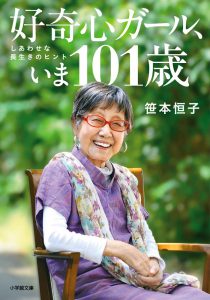 遊びの教育的な価値について言えば,新しい能力を身につけるような種類の遊びは,誰もが賛美するだろう。しかし,‘まねごと’をするような遊びには,多くの近代人(現代人)は懐疑の目を向けている。おとなの生活においては,白昼夢は,多かれ少なかれ病的であり,現実の世界における努力の代用品だと考えられている。白昼夢にあびせられた不信のうちのいくらかが,子供のまねごとの方にこぼれ落ちてきているが,私の考えでは,これはまったく間違っている。
遊びの教育的な価値について言えば,新しい能力を身につけるような種類の遊びは,誰もが賛美するだろう。しかし,‘まねごと’をするような遊びには,多くの近代人(現代人)は懐疑の目を向けている。おとなの生活においては,白昼夢は,多かれ少なかれ病的であり,現実の世界における努力の代用品だと考えられている。白昼夢にあびせられた不信のうちのいくらかが,子供のまねごとの方にこぼれ落ちてきているが,私の考えでは,これはまったく間違っている。
モンテッソーリ式教育法を用いる教師は,子供が自分が使っている用具(遊具)を列車や蒸気船などに見立てるのを好まない。これは,「混乱した想像力」と呼ばれている。確かに,そのとおりである。なぜなら,子供たちの目には遊びとしか映らなくても,彼らのしていることは,実際には遊びではないからである。用具は子供を楽しませるが,その目的は教育にある。楽しみは教育の一手段でしかない。
一方,本物の遊びにおいては,楽しみが主要な目的である。「混乱した想像力」に対して向けられた異議が本当の遊びにまで持ちこまれるのは行きすぎであると思われる。同じことは,子供たちに妖精や巨人や魔女や魔法の絨毯などの話をして聞かせることに対する異議についてもあてはまる。私は,真理の禁欲主義者に同感することはできない。同様に,他の種類の禁欲主義者にも同感できない。
子供はまねごとと現実との区別がつかないとよく言われるが,そのように信ずぺき理由はほとんど見いだせない。私たちはハムレットがかつて実在したとは信じていない。しかし,ハムレットの芝居を見て楽しんでいるときにそのこと(ハムレットは実在しなかったこと)を絶えず思い出させる人がいたら,きっと腹を立てるだろう。子供たちも,へたに現実を思い出させる人には腹を立てる。しかし,子どもは,自分の作りごとに少しもだまされているわけではないのである。
As regards the educational value of play, everybody would agree in praising the sort that consists in acquiring new aptitudes, but many moderns look with suspicion upon the sort that consists in pretence. Day-dreams, in adult life, are recognized as more or less pathological, and as a substitute for efforts in the sphere of reality. Some of the discredit which has fallen upon day-dreams has spilled over on to children’s pretences, quite mistakenly, as I think. Montessori teachers do not like children to turn their apparatus into trains- or steamers or what not : this is called “disordered imagination “. They are quite right, because what the children are doing is not really play, even if to themselves it may seem to be nothing more. The apparatus amuses the child, but its purpose is instruction ; the amusement is merely a means to instruction. In real play, amusement is the governing purpose. When the objection to “disordered imagination ” is carried over into genuine play, it seems to me to go too far. The same thing applies to the objection to telling children about fairies and giants and witches and magic carpets and so on. I cannot sympathize with the ascetics of truth, any more than with ascetics of other kinds. It is commonly said that children do not distinguish between pretence and reality, but I see very little reason to believe this. We do not believe that Hamlet ever existed, but we should be annoyed by a man who kept reminding us of this while we were enjoying the play. So children are annoyed by a tactless reminder of reality, but are not in the least taken in by their own make-believe.
出典: On Education, especially in early childhood, 1926, Pt. 2:Education of character, chap. 5: Play and fancy.
詳細情報:http://russell-j.com/beginner/OE05-040.HTM
[寸言]
 大人は普通、仕事と遊びを区別する。子ども(特に幼児)の場合は、大人のような「働く義務」はないので遊んでいればよいが、成長するにつれて、単なる遊びではなく、学習(教育を受ける義務)の要素が増していく。
大人は普通、仕事と遊びを区別する。子ども(特に幼児)の場合は、大人のような「働く義務」はないので遊んでいればよいが、成長するにつれて、単なる遊びではなく、学習(教育を受ける義務)の要素が増していく。
子どもも少しでも早く大人と同じことをできるようになりたいので、学びたいという意欲は旺盛であるが,できるだけ面白い(遊びの要素がある)ものであってほしいと思う。これに対し大人(親や教師)は子どもが大きくなるにつれて、遊びの要素を少なくしてできるだけ世間に出た時に役に立つようなことをたくさん学んで身につけてほしいと希望するようになる。そうして、退行的に見える「まねごと」をいつまでもやっていたり,実用的でない知識ばかり得ようとしていると、我が子の心(精神)の発達が他の子どもよりも遅いのではないかと心配する親も出てくる。
案ずるより産むが易し。好奇心をいろいろな対象に持てることが一番重要であり、好奇心を奪うような、促成栽培的な教育(詰め込み教育など)は、知識をたくさん得られるとしても、それは一時的なもの(すぐに忘れてしまうもの)であり、長い目でみれば非効率かつ弊害を生むものとなるであろう。
